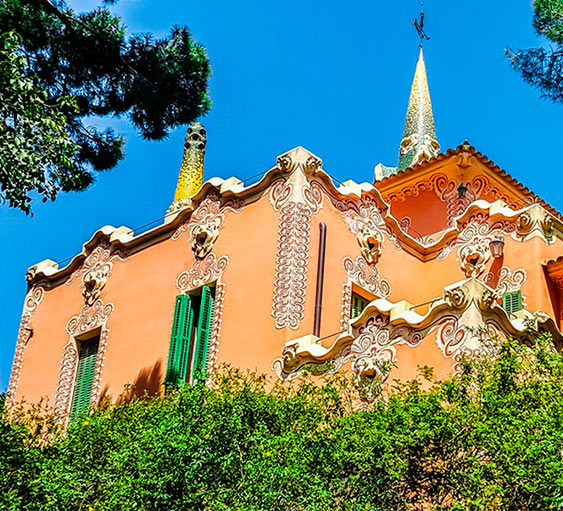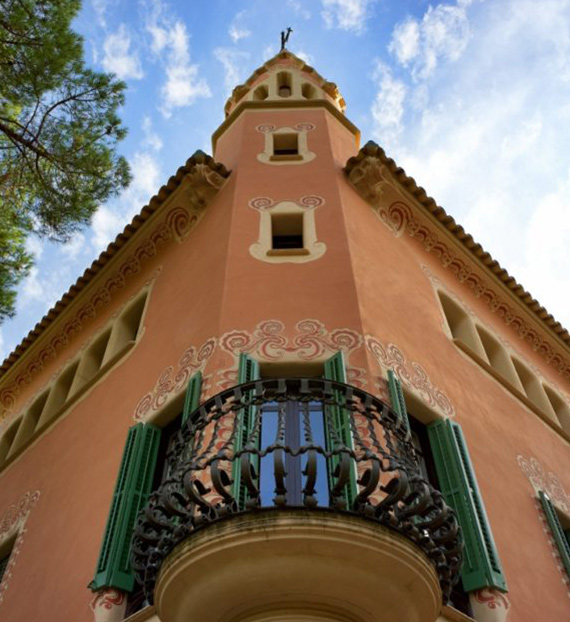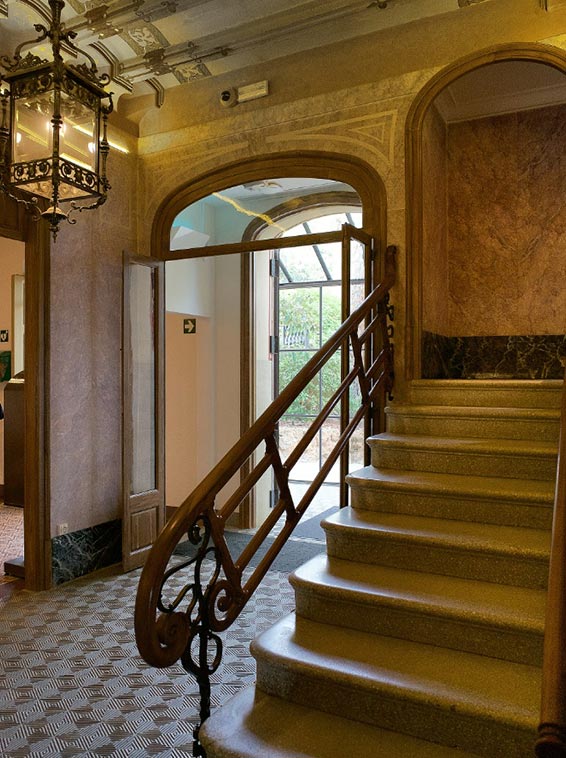Gaudí House Museum
COVID-19: To ensure your health, Sagrada Família is applying all health and sanity measures established by the Ministry of Health. Check here sanity rules for visitor
The Gaudí House Museum is the house where Gaudí lived from 1906 to 1925, it was his residence for nearly 20 years. It is located within the Park Güell in the city of Barcelona, and it is a historic home museum that contains a collection of objects and furniture designed by Antoni Gaudí. It opened as a historic home museum on 28 September 1963. It is open for visitors with an entrance fee, tickets can be purchased online in advance for your trip.
Gaudí's House
The house of Gaudí is located within the Park Güell in Barcelona city. It was on sale, but no purchases wanted it. In 1906, Antoni Gaudí bought the house and moved inside at Park Güell with his father Francesc Gaudí i Sierra, and also his niece Rosa Egea i Gaudí. Later that year, his father passed away, and a few years later so did his niece, in January 1912. After that, Gaudí lived in the house by himself. During his time living there, his neighbours were the Güell and Trias families.
Antoni Gaudí lived in the model home for about 20 years, while he continued to work on his most important projects and – from 1914 – he dedicated his time exclusively on the building of la Sagrada Família. Then, in 1925, Gaudí moved to the workshop at la Sagrada Família to be closer to the construction. In 1963 it inaugurated as a historic home museum.


Sagrada Família Model
Gaudí preferred the use of modelling architecture over drawing it; specially models made of chains that hung from the ceiling, or strings with small weights attached to them. The process of experimenting with such models led him to discover a form to use traditional Catalan masonry techniques in new, more complex ways. A chain that is suspended from both ends results in a catenary curve that distributes the static load naturally – tension, in this case – and evenly between the links of the chain. Gaudí applied this tension-compression analogy to chains hanging from chains asymmetrically, that allowed him to design a much more fluid architecture.
It is known that Gaudí drew the outline of the temple he was designing on a board made of wood, on a scale of 1:10, that he then attached to the ceiling. He would hang cords on the points where the columns would be placed. Then, he put small sacks filled with pellets from each of the catenary arches formed by the cords. He would photograph the model from several angles until he reached the exact shape of the structure of the church, knowing from the model precisely where the columns would go. The original model is on display in Barcelona.
Gaudí's House History
At the end of the 19th century, the industrial tycoon Eusebi Güell i Bacigalupi returned to Barcelona after a stay in England with the intention to build a garden city for the Catalan elite, on the grounds of the property Can Muntaner de Dalt, which he had acquired in 1899. Güell commissioned the project to Antoni Gaudí, with a vision of having sixty houses with gardens and all the necessary services. The project was not completed because the works stopped in 1914.
Only two of the houses were built of the whole complex envisioned: doctor Trias i Domènecech’s House, and what is now today the Gaudí House Museum, which then had to serve as an attraction for potential land-buyers. The model property was designed by the architect Francesc Berenguer i Mestres, was built by contractor Josep Casanovas i Pardo and signed by Gaudí himself, between 1903 and 1905. Gaudí bought the house and lived there with his father and niece. Both of them passed away during their stay there, and Gaudí remained living there until 1925, when he moved to the workshop of la Sagrada Família a few months before his death in 1926.

Inside Gaudí's House
After Gaudí passed away on 10 June 1926, his residence in Park Güell was placed for sale and an Italian trader bought it that same year, Francesc Chiappo Arietti and his wife Josefina Sala Barucchi who moved right in. The couple admired Gaudí, and they called the residence the Gaudí House. On 28 September 1963 the house opened as the Gaudí House Museum.
The building has four floors. The ground and first floors showcase the collection opened to the public. The basement is not accessible to visitors, and the second floor contains the Enric Casanelles Library, that can be accessed with prior permission.
The collection is presented in a way to represent memories of when Gaudí lived in the house, and you can view this in rooms like the bedroom, the study or the inner door, and even some personal belongings of the architect. There are wrought iron elements also designed by Gaudí exhibited in the garden, that are considered the most valuable items of the entire collection. It also includes furniture, sculptures, drawings, paintings, and other items of Gaudí’s coworkers that are also in exhibition in several rooms of the museum.


